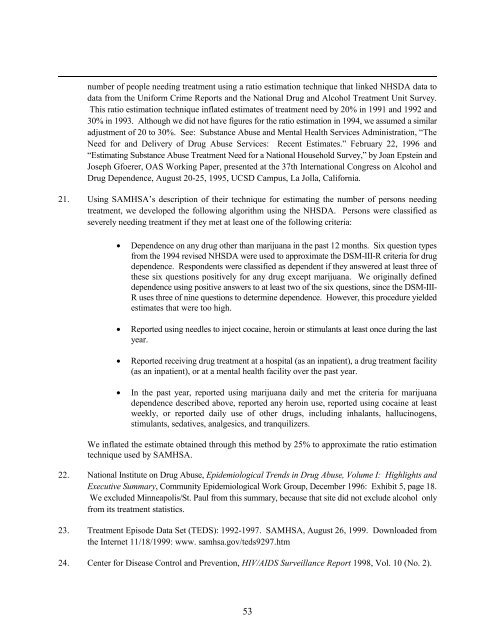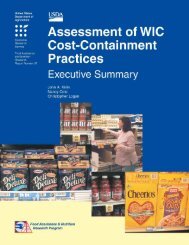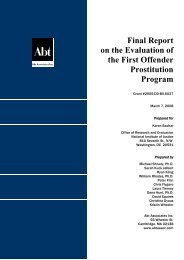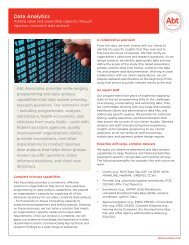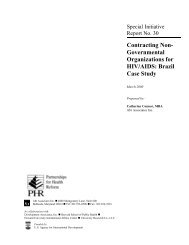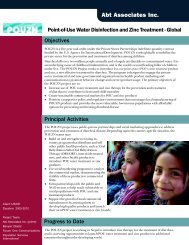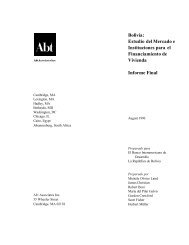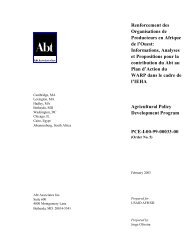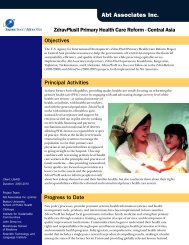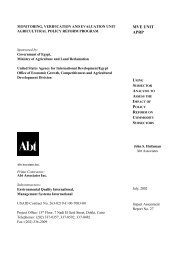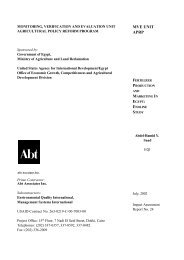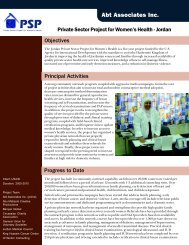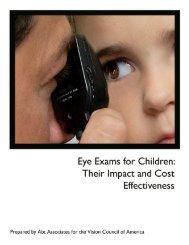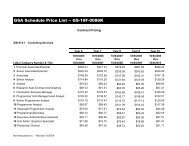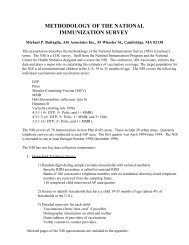What America's Users Spend on Illegal Drugs 1988-2000 - National ...
What America's Users Spend on Illegal Drugs 1988-2000 - National ...
What America's Users Spend on Illegal Drugs 1988-2000 - National ...
- No tags were found...
Create successful ePaper yourself
Turn your PDF publications into a flip-book with our unique Google optimized e-Paper software.
number of people needing treatment using a ratio estimati<strong>on</strong> technique that linked NHSDA data todata from the Uniform Crime Reports and the Nati<strong>on</strong>al Drug and Alcohol Treatment Unit Survey.This ratio estimati<strong>on</strong> technique inflated estimates of treatment need by 20% in 1991 and 1992 and30% in 1993. Although we did not have figures for the ratio estimati<strong>on</strong> in 1994, we assumed a similaradjustment of 20 to 30%. See: Substance Abuse and Mental Health Services Administrati<strong>on</strong>, “TheNeed for and Delivery of Drug Abuse Services: Recent Estimates.” February 22, 1996 and“Estimating Substance Abuse Treatment Need for a Nati<strong>on</strong>al Household Survey,” by Joan Epstein andJoseph Gfoerer, OAS Working Paper, presented at the 37th Internati<strong>on</strong>al C<strong>on</strong>gress <strong>on</strong> Alcohol andDrug Dependence, August 20-25, 1995, UCSD Campus, La Jolla, California.21. Using SAMHSA’s descripti<strong>on</strong> of their technique for estimating the number of pers<strong>on</strong>s needingtreatment, we developed the following algorithm using the NHSDA. Pers<strong>on</strong>s were classified asseverely needing treatment if they met at least <strong>on</strong>e of the following criteria:Dependence <strong>on</strong> any drug other than marijuana in the past 12 m<strong>on</strong>ths. Six questi<strong>on</strong> typesfrom the 1994 revised NHSDA were used to approximate the DSM-III-R criteria for drugdependence. Resp<strong>on</strong>dents were classified as dependent if they answered at least three ofthese six questi<strong>on</strong>s positively for any drug except marijuana. We originally defineddependence using positive answers to at least two of the six questi<strong>on</strong>s, since the DSM-III-R uses three of nine questi<strong>on</strong>s to determine dependence. However, this procedure yieldedestimates that were too high.Reported using needles to inject cocaine, heroin or stimulants at least <strong>on</strong>ce during the lastyear.Reported receiving drug treatment at a hospital (as an inpatient), a drug treatment facility(as an inpatient), or at a mental health facility over the past year.In the past year, reported using marijuana daily and met the criteria for marijuanadependence described above, reported any heroin use, reported using cocaine at leastweekly, or reported daily use of other drugs, including inhalants, hallucinogens,stimulants, sedatives, analgesics, and tranquilizers.We inflated the estimate obtained through this method by 25% to approximate the ratio estimati<strong>on</strong>technique used by SAMHSA.22. Nati<strong>on</strong>al Institute <strong>on</strong> Drug Abuse, Epidemiological Trends in Drug Abuse, Volume I: Highlights andExecutive Summary, Community Epidemiological Work Group, December 1996: Exhibit 5, page 18.We excluded Minneapolis/St. Paul from this summary, because that site did not exclude alcohol <strong>on</strong>lyfrom its treatment statistics.23. Treatment Episode Data Set (TEDS): 1992-1997. SAMHSA, August 26, 1999. Downloaded fromthe Internet 11/18/1999: www. samhsa.gov/teds9297.htm24. Center for Disease C<strong>on</strong>trol and Preventi<strong>on</strong>, HIV/AIDS Surveillance Report 1998, Vol. 10 (No. 2).53


